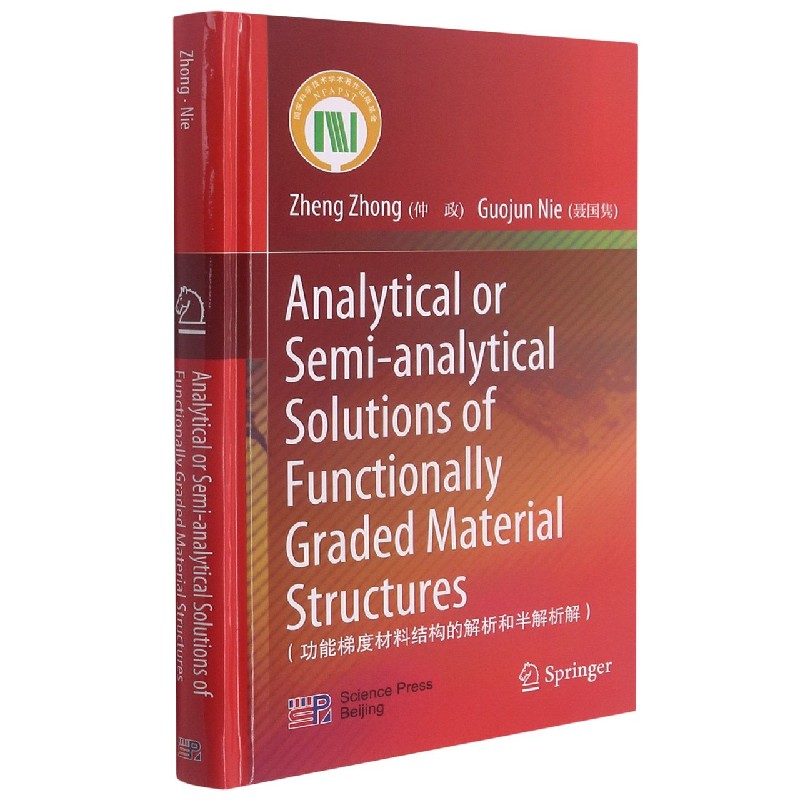
出版社: 科学
原售价: 238.00
折扣价: 188.02
折扣购买: 功能梯度材料结构的解析和半解析解(英文版)
ISBN: 9787030689993

Chapter 1 Introduction
This chapter introduces the concept of functionally graded material (FGM) and presents a brief review of recent developments in modeling and analysis of FGM structures.
1.1 Functionally Graded Materials
Functionally graded material (FGM) is a novel concept in material design and manu- facture in which the volume fractions of material constituents vary continuously with spatial positions. The concept of FGM was first proposed by Japanese scientists in 1984 for preparing thermal bamer coatings [1, 2]. Initially, FGMs were made from a mixture of ceramics and metal, or a combination of different metals. The brittle ceramic constituent of the mixture, with low thermal conductivity, provides high-temperature resistance, while the ductile metal constituent prevents the onset of cracking at stress concentration sites caused by rapid development of a high temperature gradient. The advantage of FGM is that no distinct internal boundaries exist, and failures due to interfacial stress concentrations developed in conventional components can be avoided. Featuring gradual transitions in their microstructure and composition.FGMs are designed to meet functional requirements that vary with the position of a structure component, and to optimize the overall performance of the component. As a new concept in material design, FGMs have found immediate or potential applications in the aerospace, electronics, chemical, optics, and biomedical industries [3, 4].
Although the concept of FGM is new in the industrial field, these materials exist extensively in nature. Some examples of natural FGMs are shown in Fig. 1.1. Bones, skin, and the bamboo tree have graded microstructures and display obvious graded material properties. Generally, artificially produced FGMs are composed